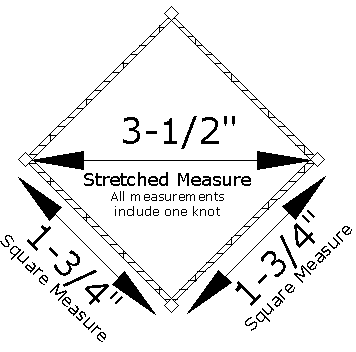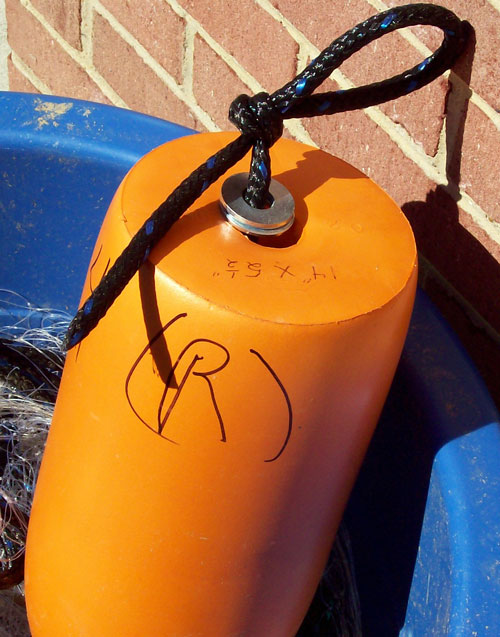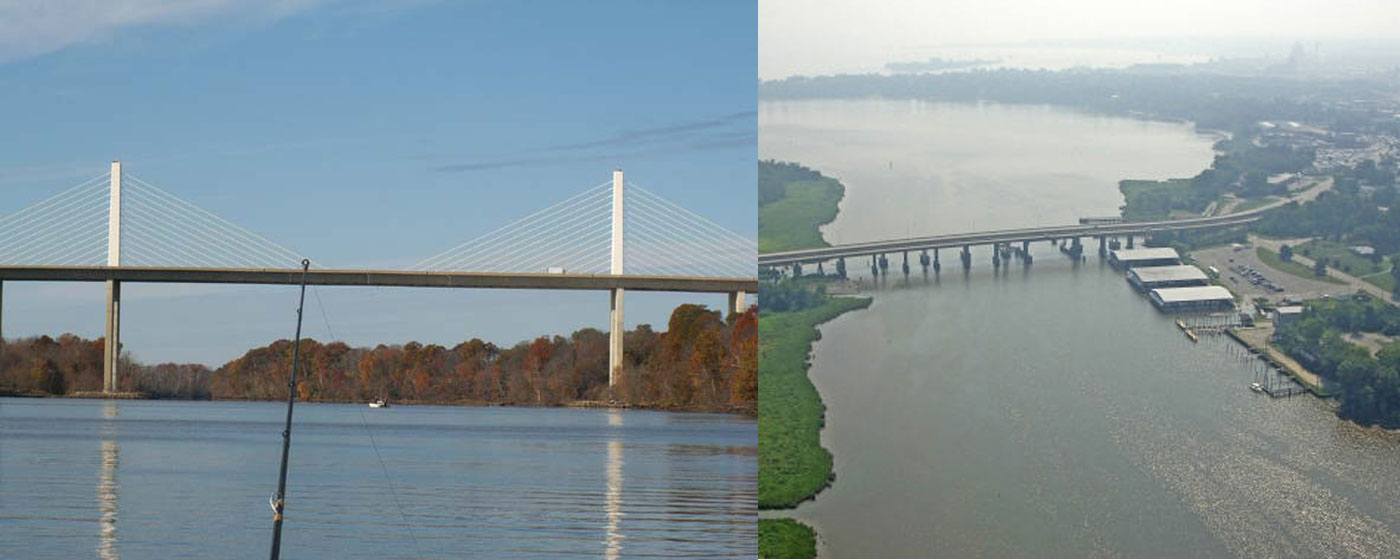Gill Net (Page 1 of 2)--James River Catfishing
 Gill Net License
can now be purchased through the VDGIF
Gill Net License
can now be purchased through the VDGIF
They are $9.00 for the year, from January to December.
Buy online or in person from hundreds of VDGIF license agents
located around the state. Although the license shows a 300' gill net
in length, regulations state max
length for recreational use is 110'.
![]()
Note:
Legal Gill Net year round
1-3/4" Mesh 3 1/2" Stretch,
110 Feet Max Length

* In areas located upriver of lines defined in
4 VAC 20-430-45: recreational
gill nets may not exceed 110 feet in length; both ends of a recerational gill
net must be marked by a floating buoy of at least 3" in diameter and floats
and buoys of the gill net must be painted blaze or flourescent orange; and must
be removed from the water no longet than 1 hour after being set
[4 VAC
20-430-45].
* Buoys of any gill net used for recreational purposes must be marked with the licensee's last 4 numbers of his/her social security number or driver's license number (at least 1"high), preceded by the letter (R) 4 VAC 20-670-40]
* Any person licensed to use a recreational gill net must stay within 100 yards of their net when it is overboard 4 VAC 20-670-30
Some of the catfishermen use a 2" Mesh x 4" Stretch but that net is illegal January- March.![]() SEASON AND TIME RESTRICTIONS
SEASON AND TIME RESTRICTIONS
* From January 1 through March 25, it is unlawful to set or fish gill nets with stretched mesh size between 3 3/4" and 6" within the restricted areas described below, except that during February any legally licensed fisherman may set or fish gill nets with stretched mesh size from 5" to 6" within the restricted areas described below. From March 26 through June 15, it is unlawful to set or fish gill nets with stretched mesh size greater than 6" within the restricted areas described below except as described by 4 VAC 20-252-135.
James River: Upstream of a line connecting Willoughby Spit and Old Point Comfort
**Note**
The above point is at
the mouth of the James and the
Chesapeake Bay ![]() Map
Map
Best Fishing For Blue Catfish In The State
As the popularity of gills nets increase rapidly there are some concerns that the bait fish (Shad) my be depleted at a point that regulations could be implemented, that is if any reports indicate a sharp decrease in the Shad population. Respecting the gill net and its ability to catch large amounts of bait should be on our minds, because sooner or later there will be more shad in the net than you can use. At that time you are wasting valuable fishing time clearing the net and trying to find other fisherman to take the unneeded shad.
So especially us that are "just-learning" please respect the net and do your best not to waste. While we enjoy the great fishing we have and the freedoms, we need to make sure we take care of our fishery. Most everyone is releasing the catfish unharmed and thus securing the fishing for years to come. Lets work together to make sure we take care of our bait too, in order to secure our continued freedom to use a gill net.
In reviewing my records I find before day break and the last 2 hours of outgoing tide is the very best time to catch bait but not always able to catch that combination. My understanding shad will be deeper after sun rise. During the day, it's much easier to catch bait the last 2 hours of outgoing tide, on high tide the bait is scattered. The easiest way to catch the shad is with a gill net.Many of the catfishermen order the gill net from The Fish Net company
Stock number is: LGM-6617
Mono 6' X 50' long.... 1-3/4" Mesh 3 1/2" Stretch.... 3/8" Float Rope.... Leaded Core Bottom Rope
Many of the guys are now going to the 100 feet length, I don't have a Stock number for that, but call Lee @ 800-256-5256 at the The Fish Net company. for info... Don't forget to order a couple of those large bullet floats below.
Also you have to order your floats separate. I forgot the stock # for my floats. Virginia regulations require that you use at least a 3.5 diameter float on each end of the net and painted a florescent/reflective orange.
 Also remember Virginia regulations require the last 4 numbers of his/her social security number or driver's license number (at least 1"high), preceded by the letter "R" on each end float.
Also remember Virginia regulations require the last 4 numbers of his/her social security number or driver's license number (at least 1"high), preceded by the letter "R" on each end float.
Note: I am now using an orange in color (much better than painting), 5-1/2" diameter x 14" long bullet floats I purchased from The Fish Net Company. The reason being I have heard of guys loosing the gill net by getting in deeper water or a catching large fish in the net. Of course with the larger floats on each end it's a little added insurance that the net will stay afloat in these situations.
Eastern Marine Outlet also sells an orange, 5" diameter x 11" long bullet float made for Crab Pots.
You will also notice I have a looped knot at the end of the float rope so I can hook the loop when retrieving the net. The loop needs to be larger just to make it easier and I also had to add the 1/2" flat washers since the holes were so large in the center of the floats. The washers keeps the knot from pulling through. Some guys just use their landing nets to grab the float also.![]() Gill Net
continued
Gill Net
continued




